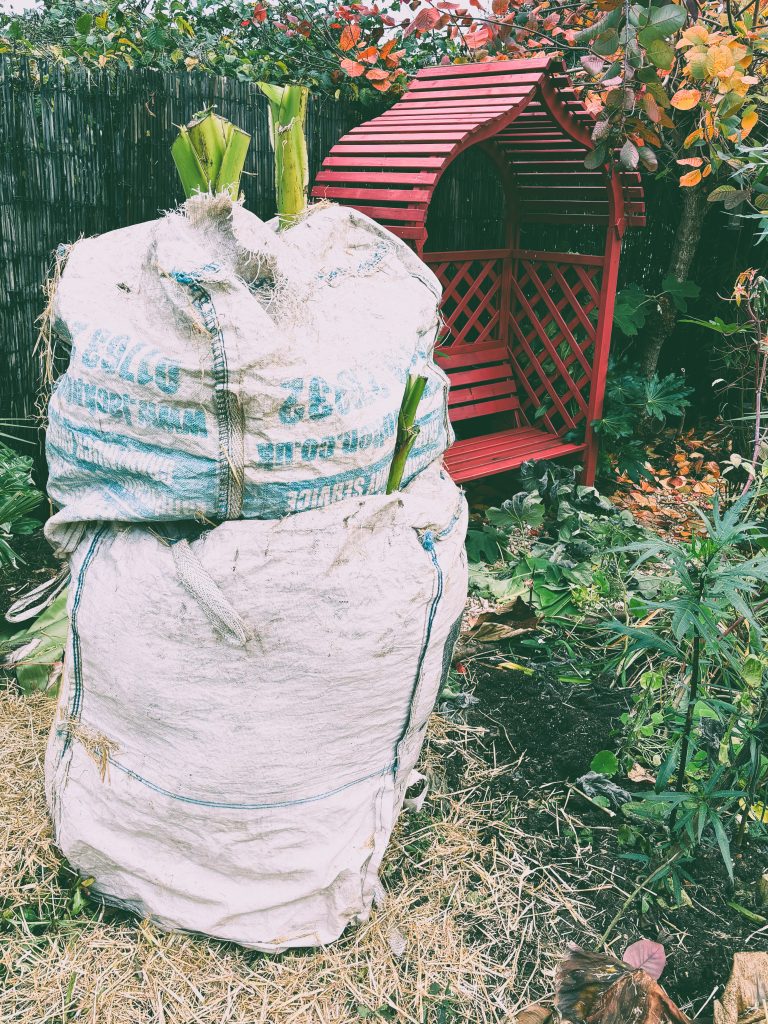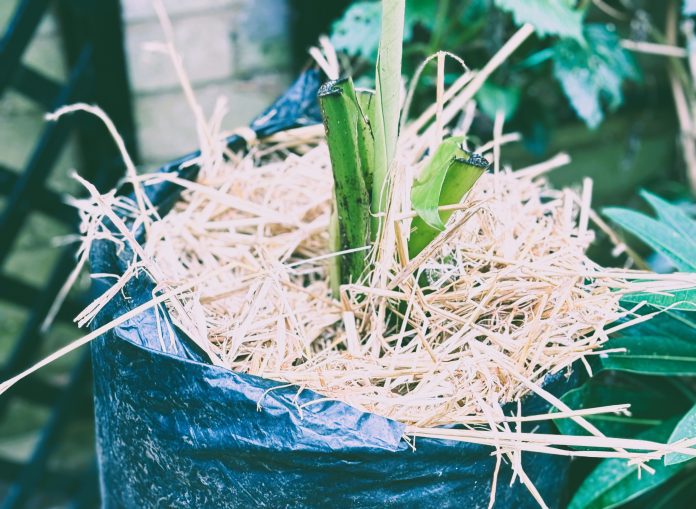Musa basjoo, also known as the hardy banana, is a popular choice for UK gardens thanks to its lush, tropical appearance and impressive cold tolerance. Native to subtropical regions of Japan, Musa basjoo can survive temperatures as low as -10°C (14°F) with proper protection. However, UK winters often combine frost with damp conditions, which can damage the plant’s pseudostem and roots if not safeguarded. Here’s how to ensure your Musa basjoo thrives through winter.
Understanding Musa basjoo’s Hardiness
While Musa basjoo is hardy, it’s important to differentiate between its parts:
- Leaves: The leaves are highly sensitive to frost and typically die back when temperatures fall to 0°C (32°F) or lower.
- Pseudostem (the trunk-like structure): Can tolerate temperatures down to -2°C to -3°C (28°F to 26°F) but will die back at around -5°C (23°F) if not protected.
- Rhizomes (roots): The underground rhizomes are the hardiest part of the plant, surviving temperatures as low as -10°C (14°F) with good insulation.
The goal of winter protection is to preserve the pseudostem and rhizomes, ensuring vigorous regrowth and a head start in spring.

Step-by-Step Guide to Winter Protection
1. Stop Feeding and Reduce Watering
- Timing: Begin tapering off fertilizer in late summer (August-September) to allow the plant to harden off before winter.
- Watering: Reduce watering significantly in autumn to prevent the roots from sitting in cold, wet soil, which can lead to rot.
2. Protecting the Pseudostem
To keep the pseudostem intact, you’ll need to insulate it against frost:
- Trim Leaves: Once frost blackens the leaves, cut them back to 15–30 cm (6–12 inches) from the top of the pseudostem.
- Wrap the Pseudostem:
- Use horticultural fleece, straw, or bubble wrap to wrap the stem from top to base.
- Secure the wrapping with twine or bungee cords, ensuring it’s snug but not so tight that it traps moisture.
- Add a Final Cover: Place a plastic cloche, bin, or breathable waterproof bag over the wrapped stem to shield it from rain while allowing air circulation.

3. Mulching the Base
- Apply a thick mulch layer (10–15 cm / 4–6 inches) around the base of the plant. Use materials like compost, bark, or straw to insulate the rhizomes.
- In colder regions, consider using an additional layer of fleece or straw over the crown for added protection.
4. For Potted Plants
- Move the container to a frost-free location, such as a greenhouse, garage, or conservatory.
- If this isn’t possible, wrap the pot with bubble wrap or hessian to insulate the roots and place it in a sheltered outdoor location.
Leaving Musa basjoo Unprotected
If you prefer a more natural approach, you can allow the pseudostem to die back completely over winter. Here’s what to do:
- Cut back the frost-damaged pseudostem to ground level in late autumn.
- Apply a thick mulch over the crown to protect the rhizome.
- The plant will regrow new pseudostems in spring, though it may take longer to reach its full height compared to protected plants.
When to Unwrap Your Banana Plant
- In early spring (March-April), once all risk of frost has passed, gradually remove the winter protection.
- Check for any signs of rot on the pseudostem and trim back as necessary.
Encouraging Spring Growth
- Feeding: Apply a high-nitrogen fertilizer in late spring to encourage strong growth.
- Watering: Resume regular watering as temperatures warm.
- Pruning: Remove any dead or damaged parts of the pseudostem to promote healthy regrowth.
Final Tips for Winter Success
- Drainage is Key: Whether in the ground or a pot, ensure the soil drains well to prevent waterlogging.
- Monitor Weather: Keep an eye on forecasts and be ready to add extra layers of protection during extreme cold snaps.
- Experiment with Microclimates: Planting near a south-facing wall or under the canopy of larger trees can provide extra warmth and shelter.
By following these steps, your Musa basjoo will reward you with lush, towering foliage year after year, adding a touch of the tropics to your UK garden.




